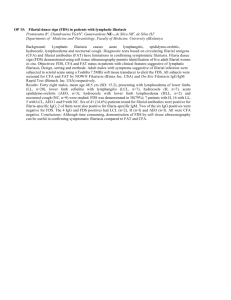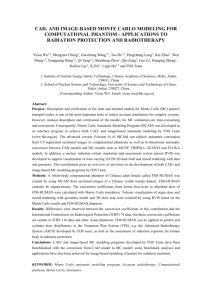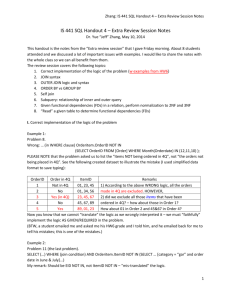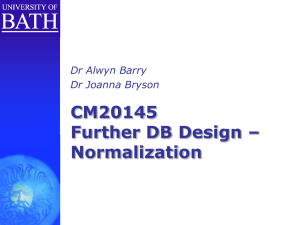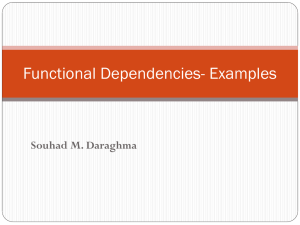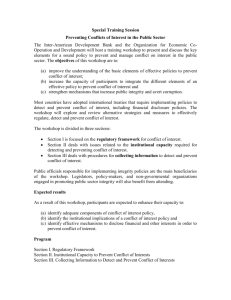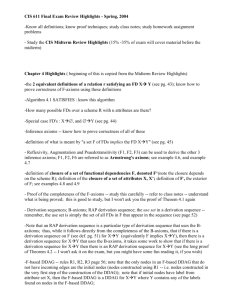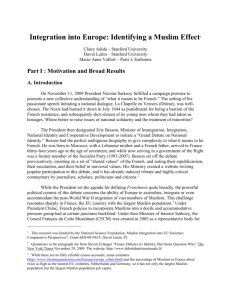Minimal Cover & Functional Dependencies in Databases
advertisement
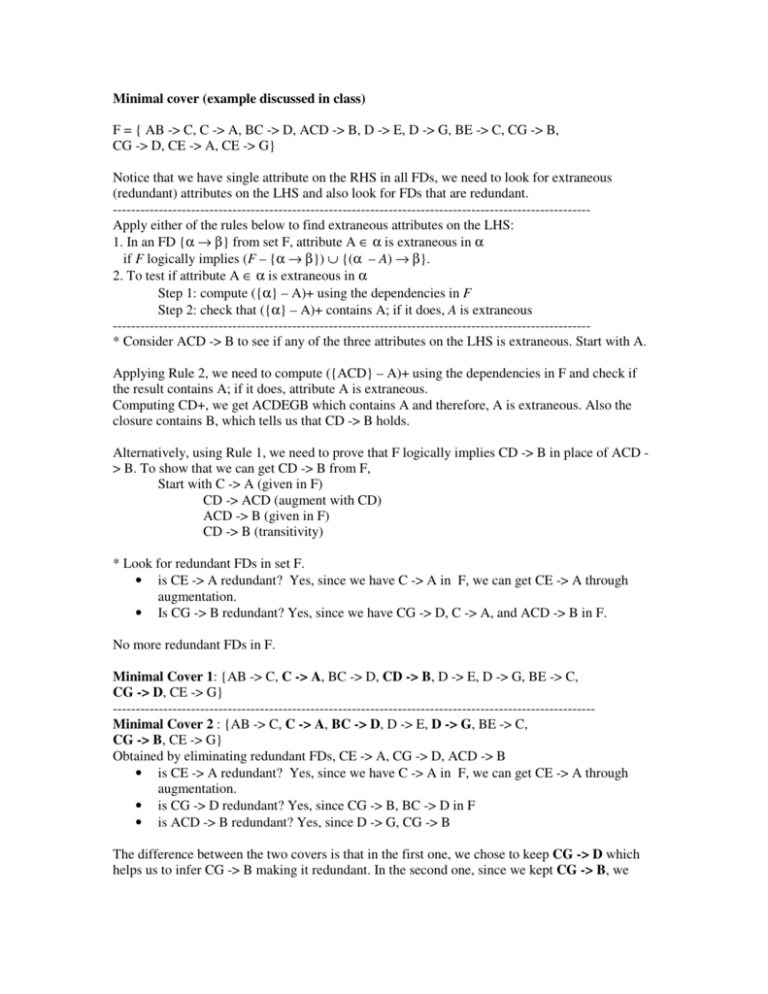
Minimal cover (example discussed in class)
F = { AB -> C, C -> A, BC -> D, ACD -> B, D -> E, D -> G, BE -> C, CG -> B,
CG -> D, CE -> A, CE -> G}
Notice that we have single attribute on the RHS in all FDs, we need to look for extraneous
(redundant) attributes on the LHS and also look for FDs that are redundant.
-------------------------------------------------------------------------------------------------------Apply either of the rules below to find extraneous attributes on the LHS:
1. In an FD {α → β} from set F, attribute A ∈ α is extraneous in α
if F logically implies (F – {α → β}) ∪ {(α – A) → β}.
2. To test if attribute A ∈ α is extraneous in α
Step 1: compute ({α} – A)+ using the dependencies in F
Step 2: check that ({α} – A)+ contains A; if it does, A is extraneous
-------------------------------------------------------------------------------------------------------* Consider ACD -> B to see if any of the three attributes on the LHS is extraneous. Start with A.
Applying Rule 2, we need to compute ({ACD} – A)+ using the dependencies in F and check if
the result contains A; if it does, attribute A is extraneous.
Computing CD+, we get ACDEGB which contains A and therefore, A is extraneous. Also the
closure contains B, which tells us that CD -> B holds.
Alternatively, using Rule 1, we need to prove that F logically implies CD -> B in place of ACD > B. To show that we can get CD -> B from F,
Start with C -> A (given in F)
CD -> ACD (augment with CD)
ACD -> B (given in F)
CD -> B (transitivity)
* Look for redundant FDs in set F.
• is CE -> A redundant? Yes, since we have C -> A in F, we can get CE -> A through
augmentation.
• Is CG -> B redundant? Yes, since we have CG -> D, C -> A, and ACD -> B in F.
No more redundant FDs in F.
Minimal Cover 1: {AB -> C, C -> A, BC -> D, CD -> B, D -> E, D -> G, BE -> C,
CG -> D, CE -> G}
--------------------------------------------------------------------------------------------------------Minimal Cover 2 : {AB -> C, C -> A, BC -> D, D -> E, D -> G, BE -> C,
CG -> B, CE -> G}
Obtained by eliminating redundant FDs, CE -> A, CG -> D, ACD -> B
• is CE -> A redundant? Yes, since we have C -> A in F, we can get CE -> A through
augmentation.
• is CG -> D redundant? Yes, since CG -> B, BC -> D in F
• is ACD -> B redundant? Yes, since D -> G, CG -> B
The difference between the two covers is that in the first one, we chose to keep CG -> D which
helps us to infer CG -> B making it redundant. In the second one, since we kept CG -> B, we
could eliminate CG -> D and ACD -> B as redundant. We need one of {CG -> D, CG -> B} in
the minimal cover – can not eliminate both.
--------------------------------------------------------------------------------------------------------------------Equivalence between sets of Functional Dependencies:
Consider two sets of FDs, F and G,
F = {A -> B, B -> C, AC -> D} and
G = {A -> B, B -> C, A -> D}
Are F and G equivalent?
To determine their equivalence, we need to prove that F+ = G+. However, since computing F+ or
G+ is computationally expensive we take a short cut. We can conclude that F and G are
equivalent, if we can prove that all FDs in F can be inferred from the set of FDs in G and vice
versa.
For our example above, let us see if we can infer all FDs in F using G; we will use attribute
closure to determine that.
Take the attributes from the LHS of FDs in F and compute attribute closure for each using FDs in
G:
A+ using G = ABCD; A -> A; A -> B; A -> C; A -> D;
B+ using G = BC; B -> B; B -> C;
AC+ using G = ABCD; AC -> A; AC -> B; AC -> C; AC -> D;
Notice that all FDs in F (highlighted) can be inferred using FDs in G.
To see if all FDs in G are inferred by F, compute attribute closure for attributes on the LHS of
FDs in G using FDs in F:
A+ using F = ABCD; A -> A; A -> B; A -> C; A-> D;
B+ using F = BC; B -> B; B -> C;
Since all FDs in F can be obtained from G and vice versa, we conclude that F and G are
equivalent.
--------------------------------------------------------------------------------------------------------------A Counter Example:
F = {A -> B, A ->C}
G = {A -> B, B -> C}
F and G are not equivalent, because B -> C in G is not inferred from the FDs in F.
A+ using G = ABC;
Whereas,
A+ using F = ABC; but B+ using F = B, indicating B -> C in G is not inferred using the
FDs from F.
-------------------------------------------------------------------------------------------------------------------

